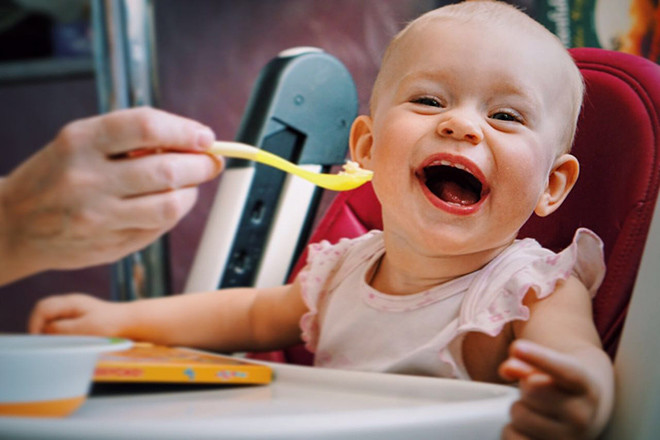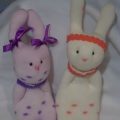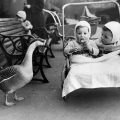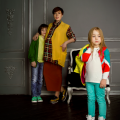In fact, after the first few days of feeding, Ibegan to doubt that it was so wonderful. Sometimes the daughter did not even open her mouth, pushed the spoon away with her hands, and everything around was in vegetable purée. But in any case, this is a new stage. The baby starts eating from the spoon! A photo: Olga Eremina A child must learn to absorb liquid and solid food separately. It helps to develop fine motor skills, coordination, taste buds, and later chewing movements. In addition, when a baby eats with a spoon, it helps to form the right bite.
A photo: Olga Eremina A child must learn to absorb liquid and solid food separately. It helps to develop fine motor skills, coordination, taste buds, and later chewing movements. In addition, when a baby eats with a spoon, it helps to form the right bite.
When to start?
The introduction of complementary foods at 4 months is considered normal.for babies on artificial feeding, and at 6 months for babies on breastfeeding. An earlier start of complementary feeding is not desirable. This is due to the immaturity of the intestinal wall, possible deterioration of breastfeeding, negative impact on the kidneys, immune system and the risk of allergies. It is important that your baby is ready for complementary feeding. The main criteria I chose for myself were:
- breastfeeding is already established, and with it there are no difficulties;
- baby can sit in a highchaireven if not quite upright (for me it was important to feed in a high chair, because if you just put your daughter on your knees, she constantly turned around, as a result, more food flew past than was eaten);
- the child shows interest in food, with pleasure looks how adults eat, stretches handles to products and plates.
And what about drinks for the baby?
With the introduction of complementary foods, we began to offerbaby water. This is especially important in hot weather. Before this, breast milk completely covered the baby's fluid needs. But remember that drinking before meals can reduce the baby's appetite. The best drink for a child is water. If the baby does not drink it at all, you can cook compote or offer a decoction of prunes, rose hips, or chamomile tea for children. It is better to teach a child to drink from a sippy cup or glass as early as possible, rather than giving water from a bottle. We offered our daughter water from a sippy cup many times, but she refused time and time again. And after that, we simply removed the lid of the sippy cup and offered to drink directly from the cup. It turned out to be most convenient to practice this process during bathing, since at first the water often spilled. But gradually my daughter understood how to drink, and now she does it with pleasure like an adult. Of course, you have to hold the glass, since the baby can immediately turn all the water on herself, but she has already learned the principle.









